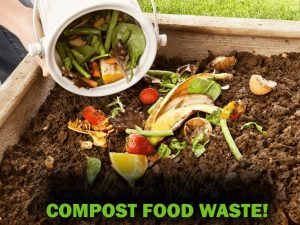
Introduction
Climate change is one of the biggest challenges facing our planet today. The good news is that each of us has the power to make a difference by reducing our carbon footprint. A carbon footprint is the total amount of greenhouse gases (GHGs) emitted into the atmosphere due to human activities. These emissions come from transportation, energy use, food production, and daily consumption habits.
By making small and simple changes in our everyday lives, we can help the environment, reduce pollution, and create a more sustainable future. In this article, we will explore 10 easy and effective ways to lower your carbon footprint and make a positive impact on the planet.
What is a Carbon Footprint and Why Does It Matter?

A carbon footprint refers to the total amount of carbon dioxide (CO₂) and other greenhouse gases emitted due to human actions. These emissions contribute to global warming and climate change, leading to rising temperatures, extreme weather, and environmental damage.
By reducing carbon emissions, we can:
- Slow down climate change and protect ecosystems.
- Improve air quality and reduce pollution.
- Save energy and resources for future generations.
- Lower utility bills and personal expenses.
Now, let’s explore 10 simple ways to reduce your carbon footprint.
Simple Ways to Reduce Your Carbon Footprint
1. Use Energy-Efficient Appliances

Energy-efficient appliances use less electricity and reduce greenhouse gas emissions. Look for products with the ENERGY STAR label, which indicates that they meet high energy-saving standards.
Tips
- Replace old bulbs with LED lights, which use 80% less energy.
- Unplug devices when not in use to prevent phantom energy loss.
- Set your thermostat a few degrees lower in winter and higher in summer.
By using energy-efficient appliances, you can reduce electricity consumption and lower your carbon footprint.
2. Reduce, Reuse, and Recycle

The three R’s Reduce, Reuse, and Recycle help minimize waste and conserve natural resources.
Tips
- Reduce plastic use by bringing reusable bags, bottles, and containers.
- Reuse items instead of throwing them away donate clothes, repurpose furniture, and repair electronics.
- Recycle paper, glass, plastic, and metal to prevent landfill waste.
A circular economy where resources are reused and recycled helps cut down emissions and pollution.
3. Drive Less and Use Sustainable Transportation

Transportation accounts for a large portion of carbon emissions. Choosing eco-friendly travel options can significantly reduce your footprint.
Tips
- Walk or bike for short trips instead of driving.
- Use public transportation or carpool when possible.
- Switch to a hybrid or electric vehicle (EV) to cut emissions.
Reducing car travel lowers fuel consumption and decreases pollution, making a huge impact on the environment.
4. Eat More Plant-Based Foods

Food production, especially meat and dairy, contributes to high carbon emissions due to deforestation, transportation, and water use.
Tips
- Reduce red meat and dairy consumption, as they have the highest carbon footprint.
- Choose local and seasonal produce to cut transportation emissions.
- Reduce food waste by planning meals and storing food properly.
Switching to a more plant-based diet helps reduce emissions and supports a healthier planet.
5. Conserve Water

Water usage has a direct impact on energy consumption and emissions. Reducing water waste helps save energy and protect natural resources.
Tips
- Fix leaks to prevent unnecessary water waste.
- Install low-flow showerheads and faucets to reduce water use.
- Turn off the tap while brushing your teeth or washing dishes.
Conserving water reduces energy demand from water treatment and heating processes, cutting down emissions.
6. Support Renewable Energy Sources

Switching to renewable energy helps reduce reliance on fossil fuels and lowers carbon emissions.
Tips
- Install solar panels for home electricity.
- Choose green energy plans from your electricity provider.
- Support policies that promote wind, solar, and hydropower.
By investing in clean energy, we move towards a more sustainable future.
7. Buy Less and Choose Sustainable Products

Consumer goods contribute to emissions through manufacturing, packaging, and transportation. Buying less helps reduce waste and pollution.
Tips
- Buy high-quality, durable products that last longer.
- Choose sustainable and eco-friendly brands.
- Avoid fast fashion and opt for second-hand or ethical clothing.
Being mindful of purchases reduces the demand for resource-heavy production.
8. Compost Organic Waste

Food waste in landfills produces methane, a greenhouse gas 25 times more potent than CO₂. Composting helps convert organic waste into nutrient-rich soil.
Tips
- Compost fruit and vegetable scraps, coffee grounds, and eggshells.
- Use compost in gardens and potted plants to enrich soil naturally.
- Support community composting programs if available.
Composting reduces landfill waste and improves soil health for a greener planet.
9. Use Eco-Friendly Cleaning and Personal Care Products

Many household cleaning products contain toxic chemicals that pollute water and air. Switching to natural alternatives is better for health and the environment.
Tips
- Use baking soda, vinegar, and lemon for cleaning.
- Choose biodegradable, non-toxic detergents and shampoos.
- Avoid single-use plastic packaging in household products.
Eco-friendly products reduce pollution and chemical exposure for a safer home and planet.
10. Spread Awareness and Advocate for Change

One of the most powerful ways to reduce carbon emissions is by inspiring others to do the same. Educating and advocating for sustainability creates a ripple effect.
Tips
- Talk to friends and family about the importance of sustainability.
- Support eco-friendly policies and businesses.
- Participate in environmental campaigns and clean-up projects.
Encouraging others to adopt greener habits leads to larger collective action for the environment.
Challenges in Reducing Carbon Footprints
Despite the benefits, there are challenges to reducing carbon footprints. Some people may find it difficult to change their habits or may not have access to eco-friendly options. Additionally, businesses may face higher costs when trying to switch to sustainable practices. Education and awareness are also essential, as not everyone understands the importance of reducing their carbon emissions.
Future of Carbon Footprint Reduction

The future of carbon footprint reduction looks promising. As technology advances, we are finding new ways to produce clean energy and reduce waste. Governments and organizations are also starting to implement policies that encourage sustainable practices. With more people getting involved and committed to making changes, we can hope for a cleaner, healthier planet in the years to come.
Comparative Table: Carbon Footprint Reduction Strategies
| Strategy | Impact on Carbon Footprint | Ease of Implementation | Long-term Benefits |
|---|---|---|---|
| Use Renewable Energy | High | Moderate | Clean energy source |
| Reduce, Reuse, Recycle | High | Easy | Less waste |
| Use Energy-Efficient Appliances | Moderate | Easy | Lower energy bills |
| Walk, Bike, or Take Public Transport | High | Moderate | Less traffic |
| Eat More Plants | High | Moderate | Healthier diet |
| Save Water | Moderate | Easy | Cost savings |
| Buy Local and Sustainable Products | Moderate | Moderate | Support local economy |
| Plant Trees and Native Plants | High | Moderate | More green spaces |
| Educate Others | Moderate | Moderate | Increased awareness |
| Measure Your Carbon Footprint | High | Easy | Informed decisions |
Analysis Table: Carbon Footprint Reduction Table
| Action | Impact on Carbon Footprint |
|---|---|
| Using energy-efficient appliances | Reduces electricity use and emissions |
| Eating more plant-based foods | Cuts methane emissions from livestock |
| Driving less | Lowers transportation-related pollution |
| Recycling and composting | Reduces landfill waste and greenhouse gases |
| Supporting renewable energy | Decreases reliance on fossil fuels |
Conclusion
Reducing your carbon footprint is achievable through small, meaningful actions that can make a significant impact on the environment. By embracing sustainable living tips, such as using renewable energy, reducing waste, and adopting a plant-based diet, you can contribute to climate change solutions. Together, we can create a more eco-friendly future for ourselves and future generations.
Key Takeaways
- Switching to energy-efficient appliances and renewable energy helps cut emissions.
- Reducing meat consumption, food waste, and water usage lowers environmental impact.
- Using sustainable products and eco-friendly transport supports climate action.
- Spreading awareness and advocating for change creates long-term impact.










